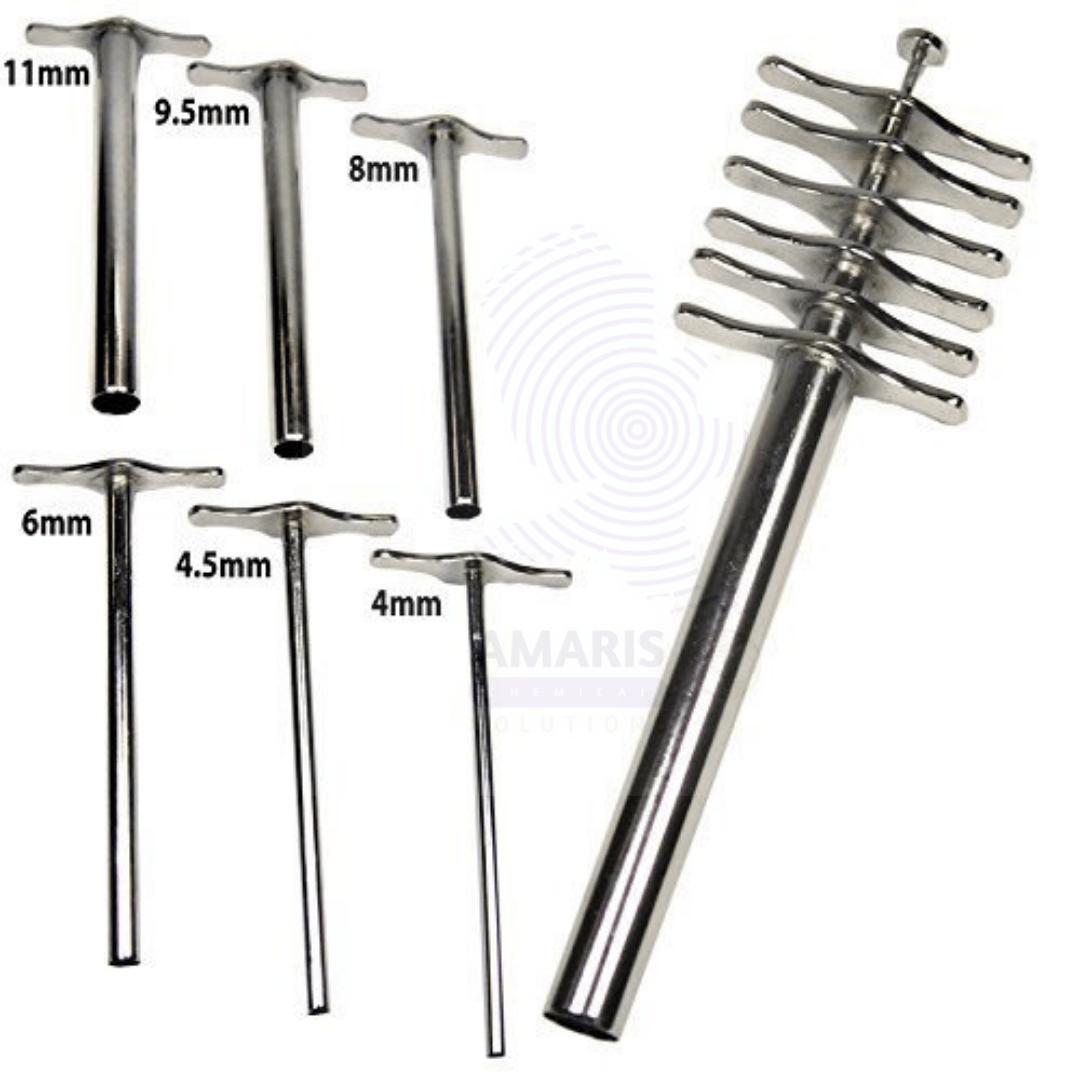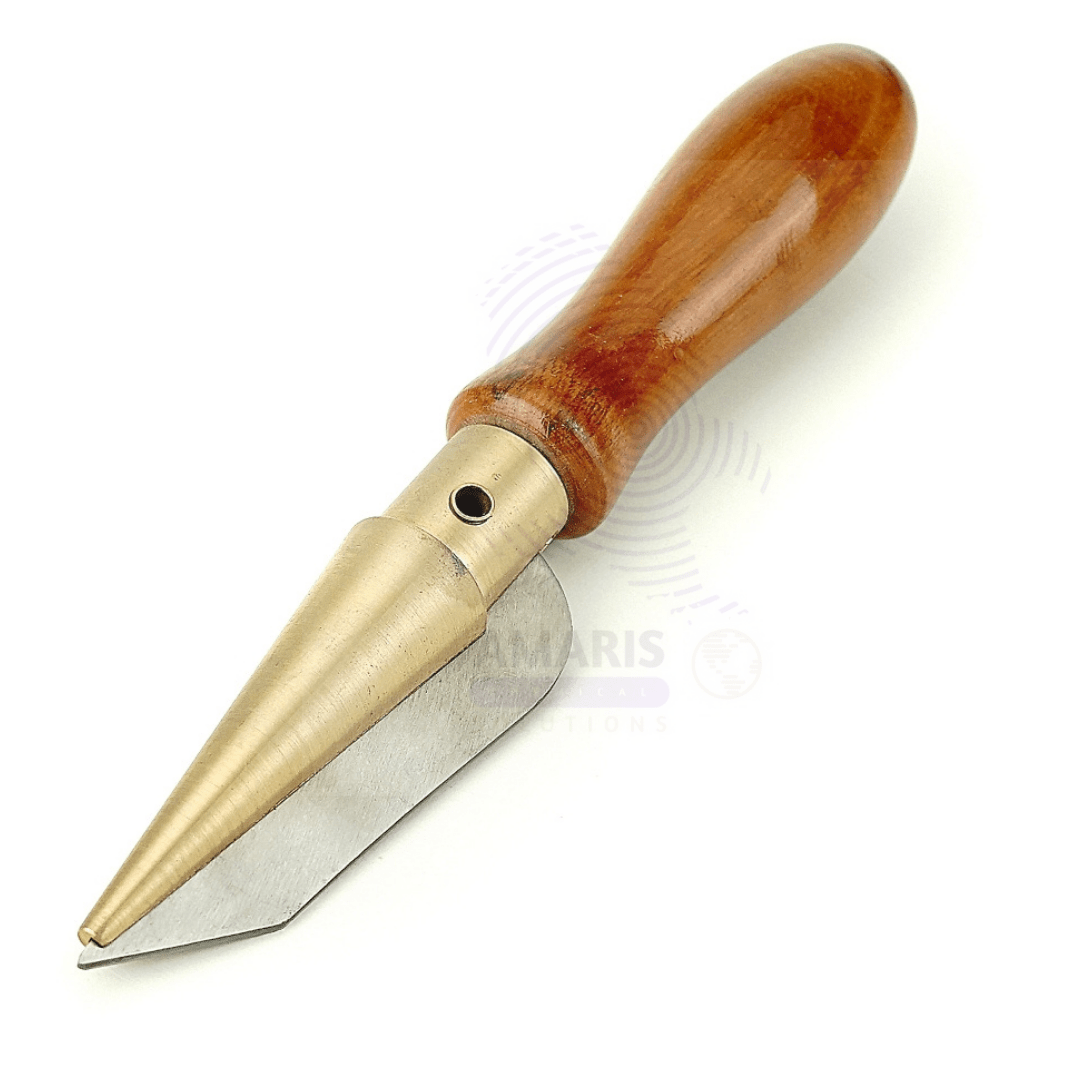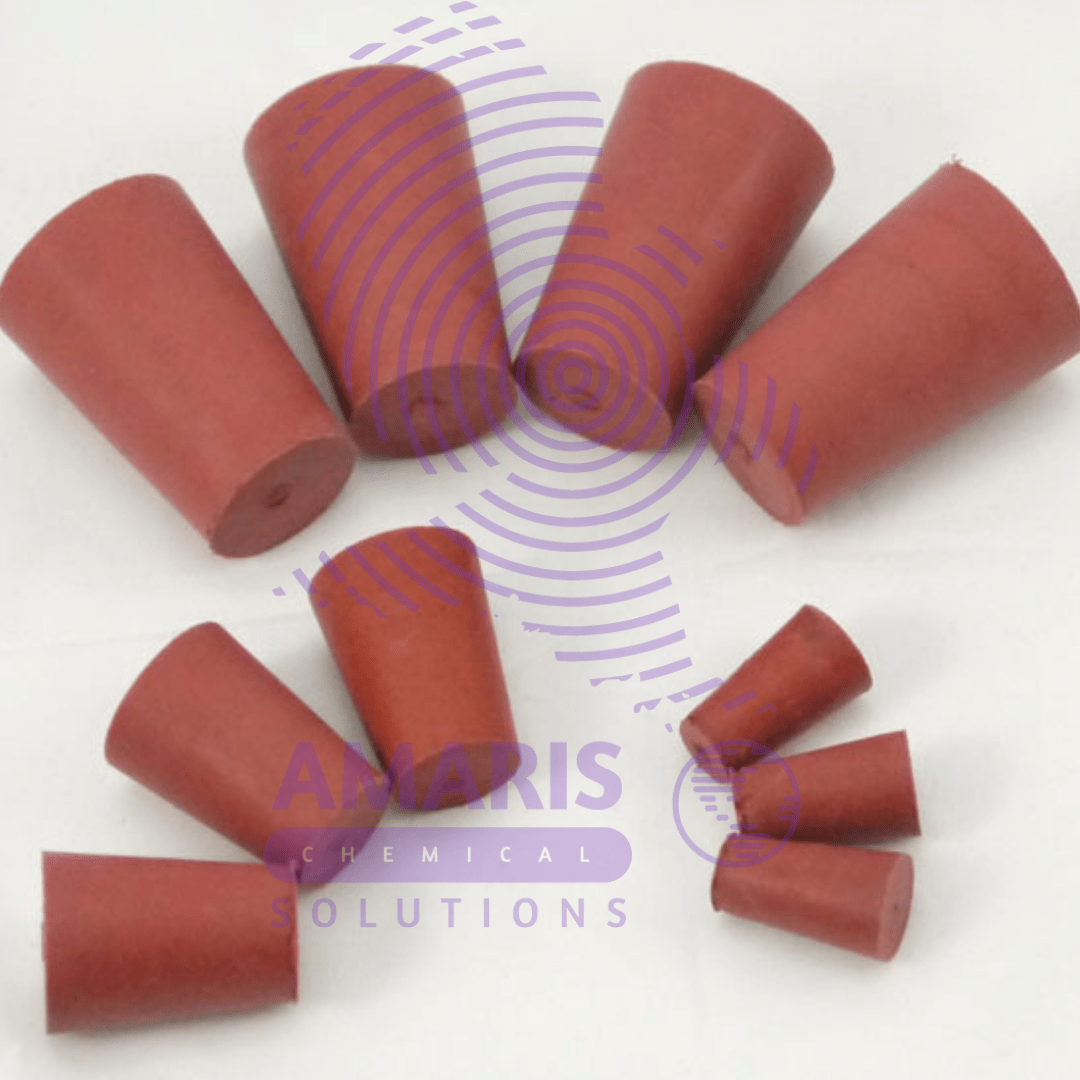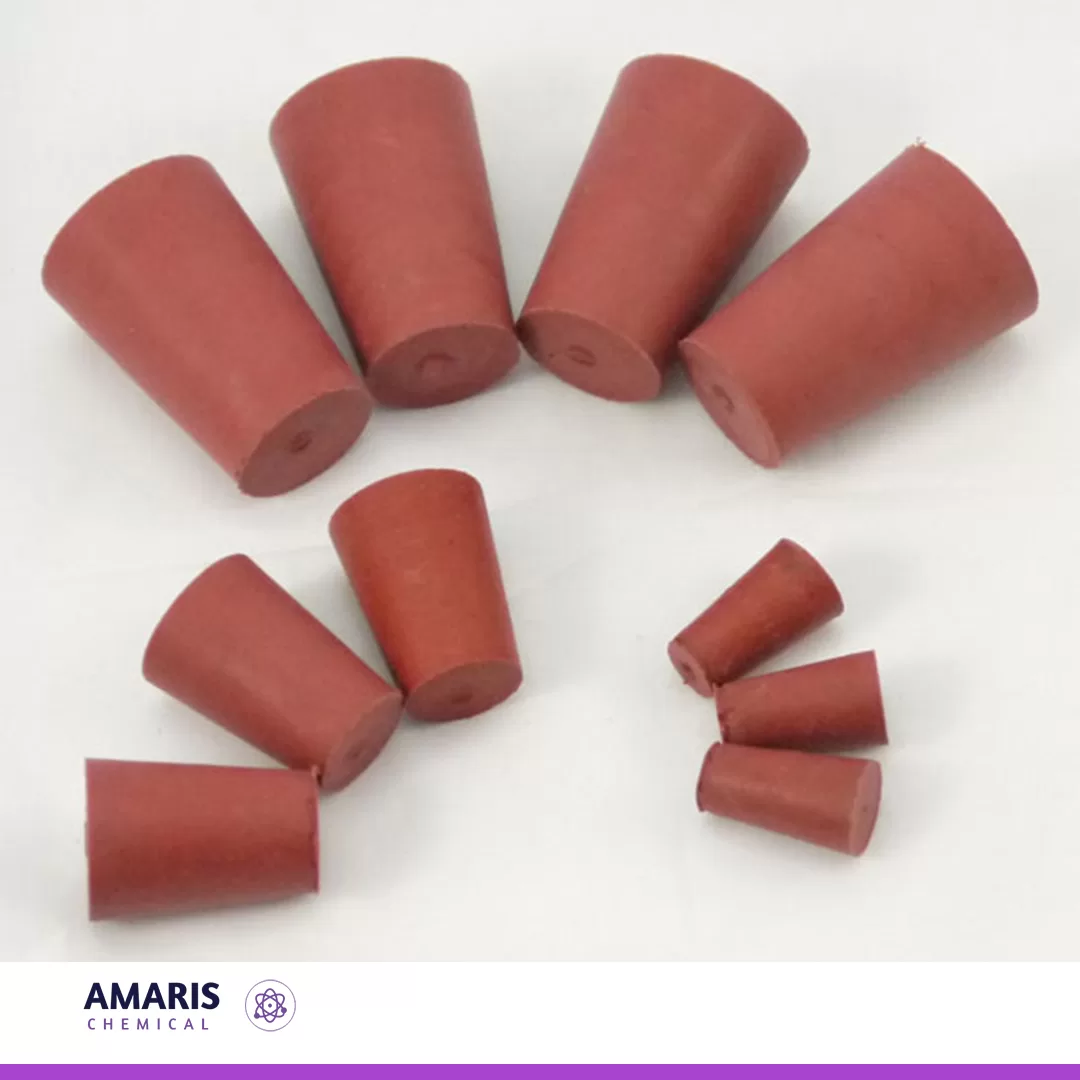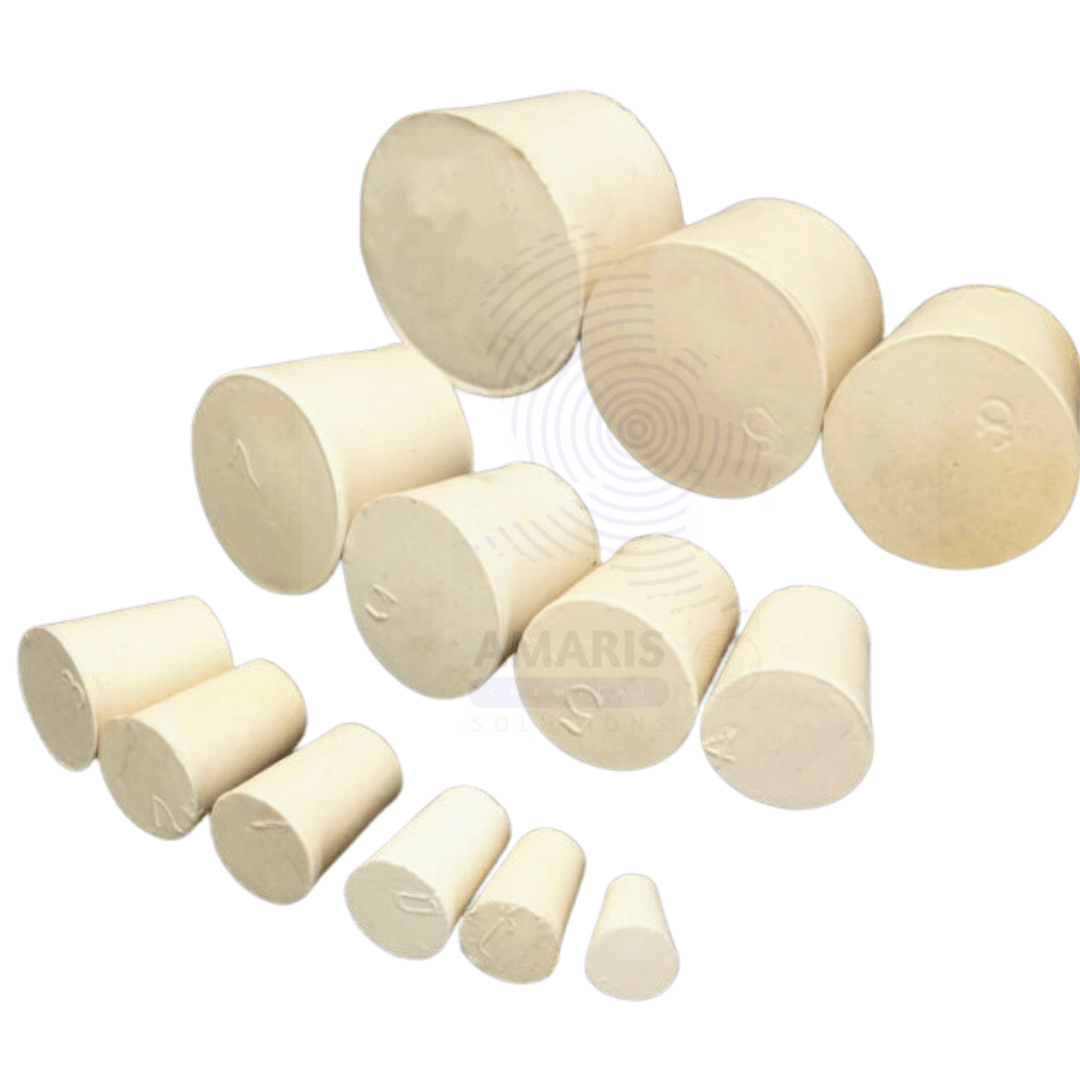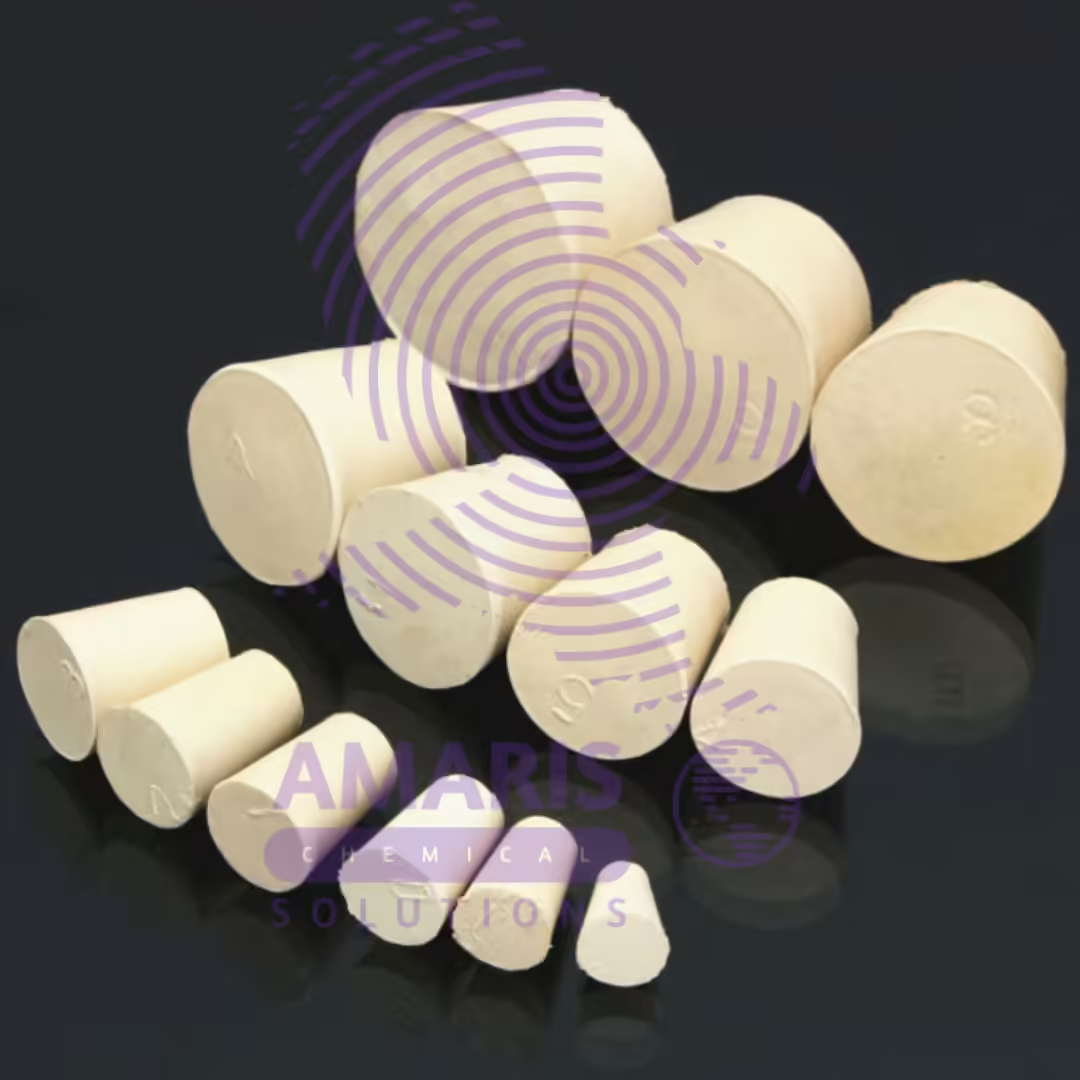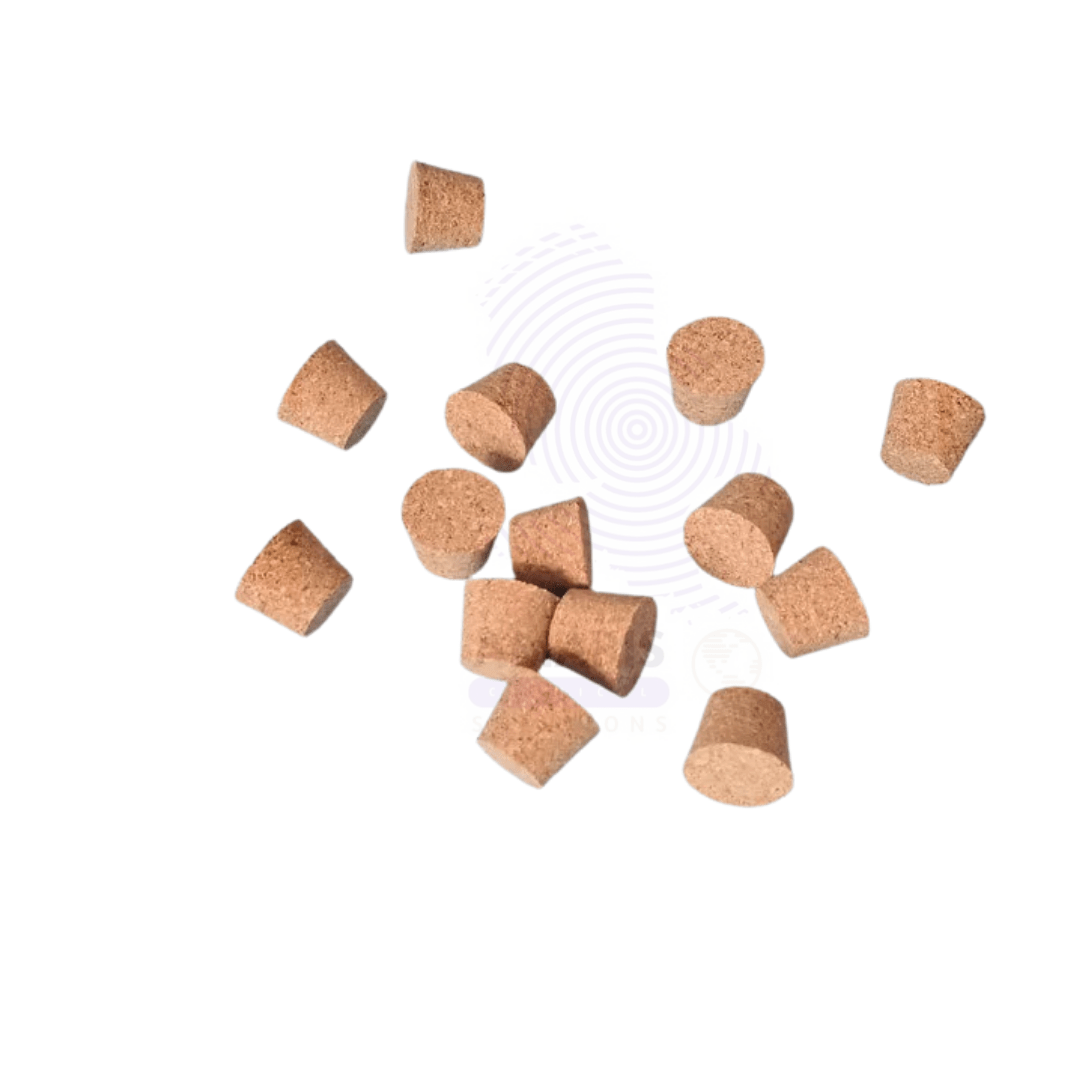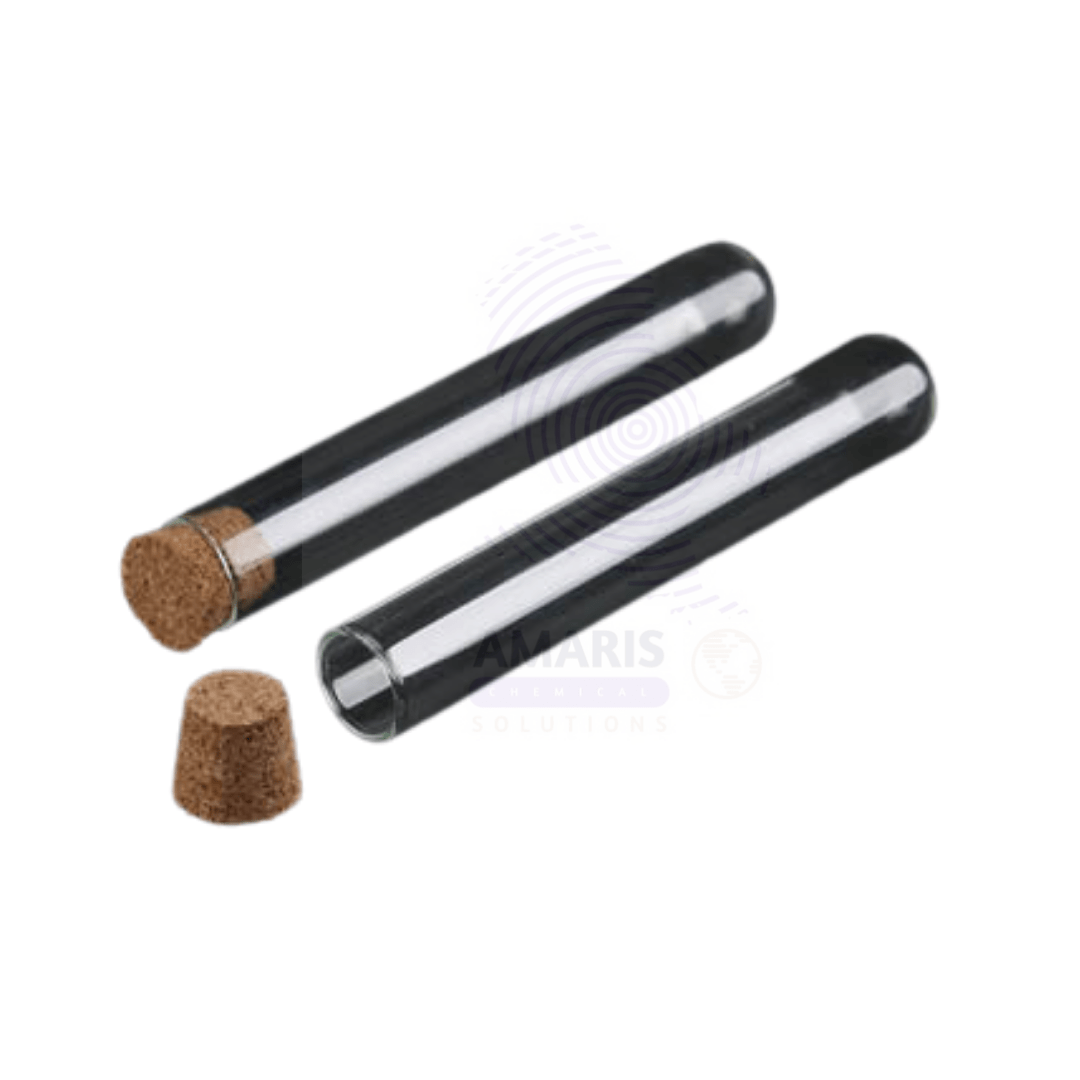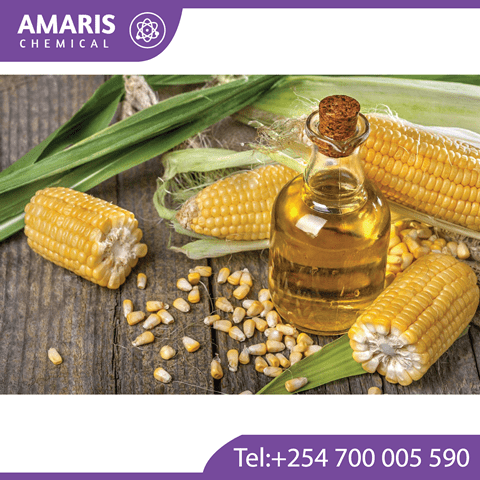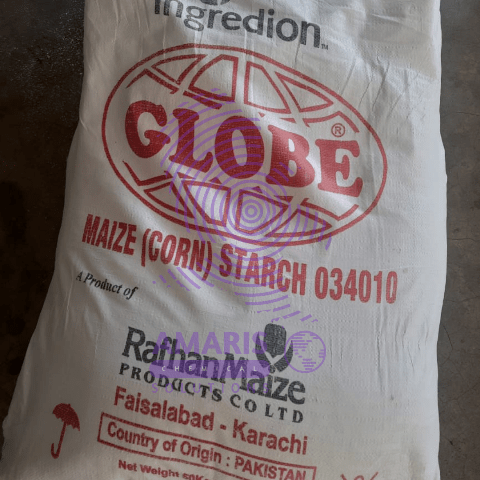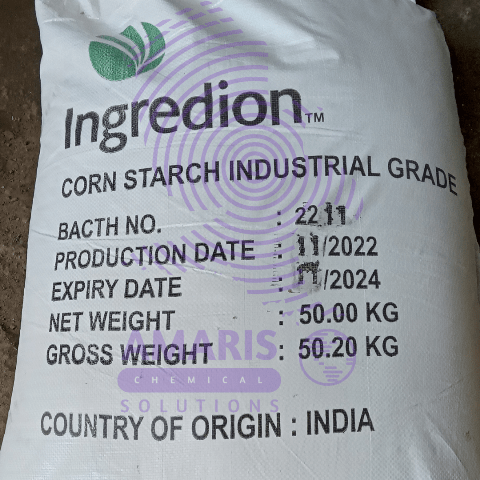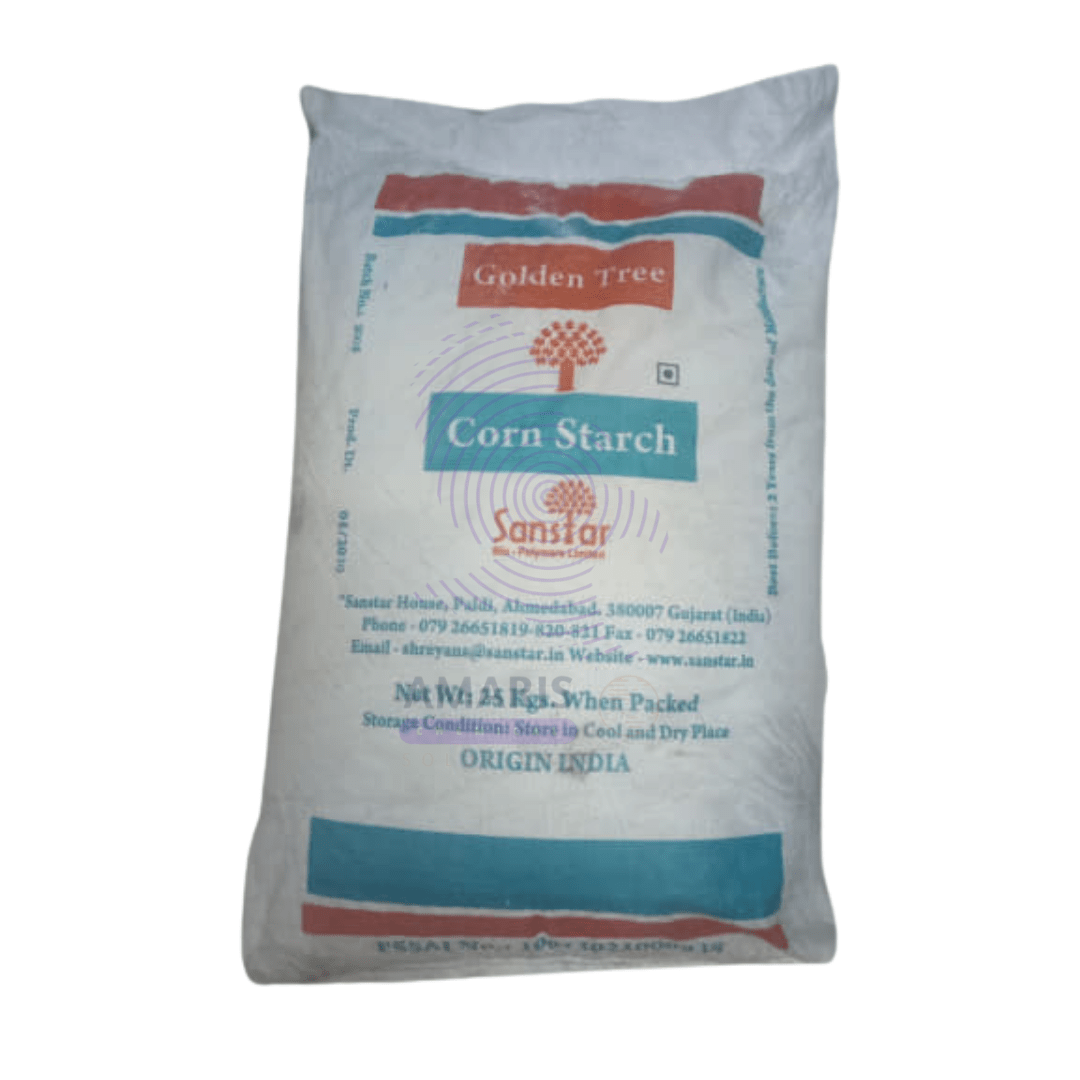Cork borer set sharpner
Cork to fit boiling tube cork
To fit a cork into a boiling tube in a laboratory setting, you'll want to ensure a snug fit to prevent any leakage or contamination. Here's a simple guide to achieve that:
Select the right size cork:
Ensure that you have a cork that matches the diameter of your boiling tube. It should fit tightly but not so tight that it's difficult to insert or remove.
Prepare the cork:
If the cork is new, it might be stiff. To make it more pliable and easier to insert, you can soak it in warm water for a few minutes. This will make it more flexible and easier to work with.
Trim if necessary:
If the cork is too long for the boiling tube, you can trim it to size using a sharp knife. Make sure to cut it evenly to maintain a tight seal.
Test fit:
Before inserting the cork into the boiling tube, test its fit to ensure it's snug but not too tight. You want it to create a good seal without being difficult to insert or remove.
Insert the cork:
Once you're satisfied with the fit, carefully insert the cork into the boiling tube. Apply even pressure to ensure it goes in straight and doesn't get stuck.
Secure the cork:
If necessary, you can use a rubber band or laboratory tape to secure the cork in place and provide additional sealing.
Check for leaks:
After inserting the cork, visually inspect the seal to make sure there are no gaps or leaks. You can also perform a leak test by filling the boiling tube with water and observing for any signs of leakage.
Monitor during use:
While using the boiling tube, periodically check the cork to ensure it remains securely in place and continues to provide a tight seal. If you notice any signs of wear or deterioration, replace the cork as needed.
Cork to fit conical flask
Cork is a natural material often used to fit a conical flask as a stopper or closure. It is typically a cylindrical or tapered piece of cork that is inserted into the neck of the flask to seal it securely. This helps prevent the escape of gases or liquids and maintains a relatively airtight or liquid-tight seal, making it suitable for various laboratory and storage purposes. Cork stoppers are known for their resilience and ability to conform to the shape of the flask's neck, providing an effective seal.
Cork to fit conical flask
A cork stopper for a conical flask is a cylindrical piece made from natural cork, designed to fit snugly into the neck of the flask. It typically features a tapered shape, allowing for a secure seal that prevents evaporation and contamination of the flask's contents. The surface of the cork is often smooth, and it may have a slightly rough texture to enhance grip. Cork stoppers are lightweight yet durable, providing excellent chemical resistance and thermal insulation. Their renewable nature makes them an eco-friendly choice for laboratory applications, ensuring reliability in various experimental settings
Cork to fit test tube
Cork stoppers are a classic choice for sealing test tubes. They're typically made from the bark of cork oak trees, which is lightweight, flexible, and impermeable to liquids and gases. Cork stoppers come in various sizes to fit different test tube diameters snugly, ensuring a secure seal to prevent leaks or contamination. When inserting a cork stopper into a test tube, it's important to ensure a proper fit to maintain the integrity of the experiment or sample being contained.
Corn starch 50kg food grade
Corn starch is a fine, powdery substance derived from the endosperm of corn kernels. It is commonly used as a thickening agent in cooking and baking, as well as in other industries such as papermaking, textiles, and adhesives. Corn starch has a neutral flavor and a translucent appearance when mixed with liquid, making it a versatile ingredient in many recipes.
Corn Starch Industrial grade 50kg
Corn starch is a fine, powdery substance derived from the endosperm of corn kernels. It is commonly used as a thickening agent in cooking and baking, as well as in other industries such as papermaking, textiles, and adhesives. Corn starch has a neutral flavor and a translucent appearance when mixed with liquid, making it a versatile ingredient in many recipes.










